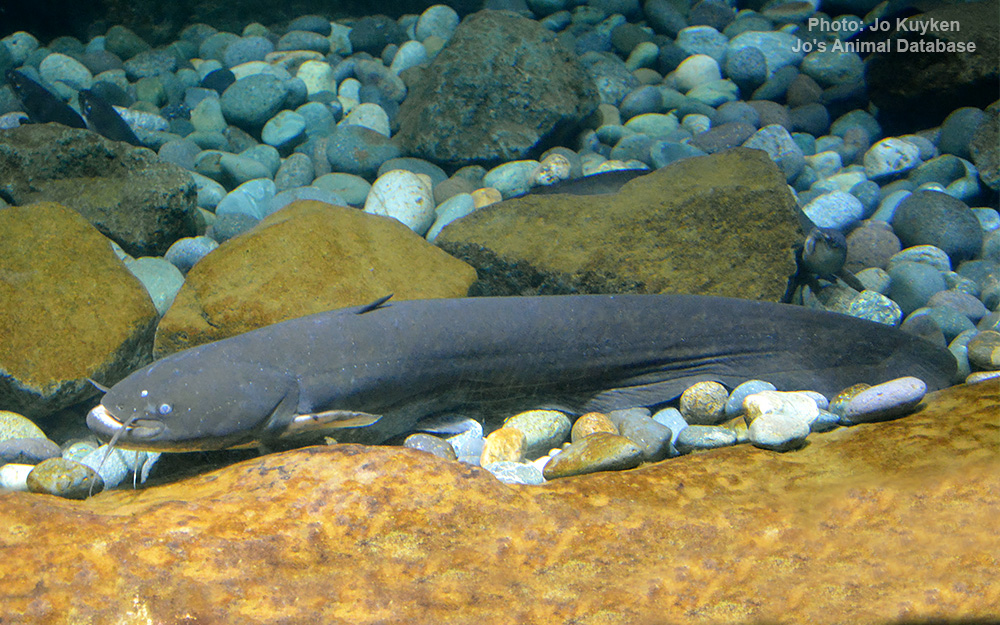Amur catfish
(Silurus asotus)

Image source: Jo's Animal Database
Classification
General data
The Amur catfish, or Japanese common catfish, is a species of catfish (sheatfish), family Siluridae.
It is a large freshwater fish found in continental East Asia and in Japan.
It prefers slow-flowing rivers, lakes, and irrigation canals. Its appearance is typical of a large silurid catfish.
Larval S. asotus specimens have three pairs of barbels (one maxillary, two mandibular), while adult fish have only two pairs (one maxillary, one mandibular); second pair of mandibular barbels degenerates.
The body is bare, grey-yellowish-green, with dark spots. The anal fin is long; the dorsal fin is short. Pectoral fins have serrated spines. The head is flat. The mouth is large and has small, sharp teeth. There are 2 pairs of barbels (2 on the upper jaw, 2 on the lower).
D 4–5; A (72) 75–84; 63-70 pores in the lateral line
DISTRIBUTION
The natural range is quite broad; it is found in basins on Sea of Japan, Yellow Sea, and South China Sea. It is resident in Taiwan, Japan, on Korean Peninsula and in Vietnam.
In Russia, the species inhabits the Amur basin from the headwaters to the Amur estuary. After its introduction in 1932 into the Ivano-Arakhleyskiya Lakes (Lake Shakshinskoe) by way of the Khilok River, the Amur catfish entered the Lake Baikal basin where it has become widespread. It is currently found in the upper reaches of the Selenge River, Lake Gusinoye, Lake Baikal, the Angara River and Bratskoye
reservoir. The species is occasionally found in the Lena basin in Lakes Ivan and Tasey of the Ivano-Arakhleyskiya lake system. It is a common lake-river fish in the upper reaches of the Amur. It inhabits many rivers including those with a submontane flow pattern (Ingoda, Chita, Olengui, etc.) and also Lakes Kenon, Nikolaevskiye, Nozhiy, Bilchir, etc.
BIOLOGY AND ECOLOGY
The species prefers shallow, well-warmed areas with silt bottoms and welldeveloped aquatic vegetation. It leads a near-benthic lifestyle.
The Amur catfish can reach a length of over 110 cm and weight of 17 kg.
Fish weighing 1.5-2 kg are usually found in catches.
The catfish spawns from May to June in 0.3–0.5 m shallows, when water temperatures warm to 15–17ºС and higher, depositing eggs on the dead
plant material and living vegetation. Eggs are greenish in colour; with their shell, the diameter is about 4 mm. Fecundity ranges from 19,000 to 65,000 eggs, and an average 49,000 eggs. This species becomes sexually mature at the age of 3, but most often at 4 years.
In terms of diet, it is an active predator.
Author: I.E. Mikheev











